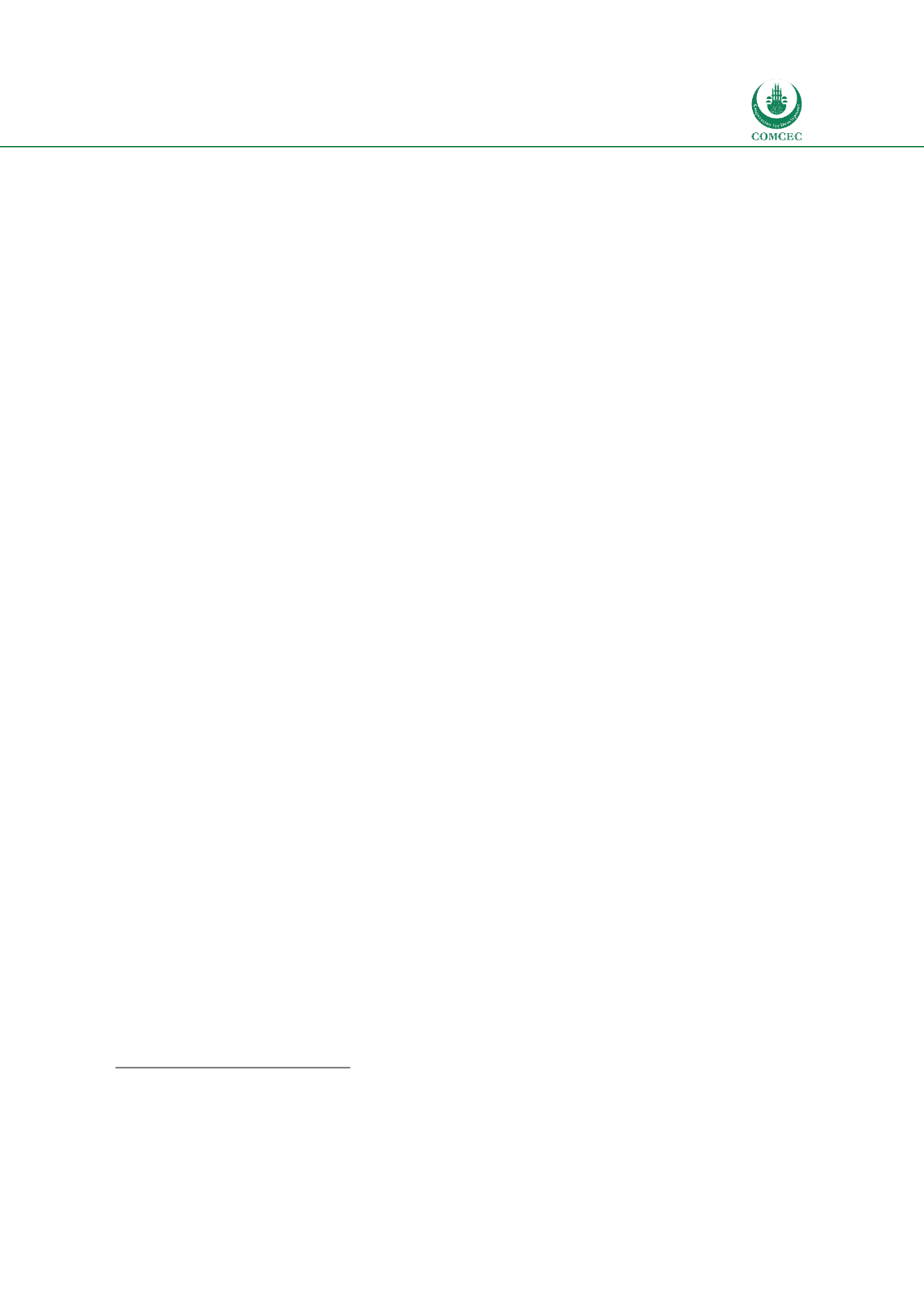

National and Global Islamic Financial Architecture:
Prolems and Possible Solutions for the OIC Member Countries
47
for risk management and capital planning at the bank level and requires higher levels of risk
disclosure to improve market discipline.
IOSCO is a global multilateral organization dealing with regulatory issues related to capital
markets. It published the
Objectives and Principles of Securities Regulation
, also known as the
IOSCO Principles, in 1998 which were then updated in 2010 after the GFC. The document
consists of 38 core principles for the regulation of the securities markets and entails three key
elements: investor protection; ensuring fair, efficient and transparent markets; and the
reduction of systematic risks. The key focus of the IOSCO's core objectives of securities
regulation is on disclosure and transparency (Singh 2013). Similarly, IAIS (2015), an
association of national level insurance regulators, has published various regulatory documents
that include the
Insurance Core Principles
. Updated in 2015, the document has 28 core
principles for the development of a sound and stable insurance industry.
Although the Basel regulatory principles and guidelines should apply to all banks, there are
some additional regulatory requirements for Islamic financial institutions.
11
This stems from
the use of Islamic financial contracts on both the liability and asset sides. The unique feature of
Shariah
compliance not only introduces risks to Islamic finance that are different from those of
its conventional counterpart but also limits the use of certain risk mitigation instruments and
products from which conventional financial institutions are able to benefit. Thus, governance
and regulation of Islamic financial institutions requires a clear understanding of the risks
arising in Islamic finance and then proposing appropriate measures to mitigate them. The
Islamic Financial Services Board (IFSB), an international standard-setting body for the Islamic
financial industry, has specified standards for Islamic financial institutions that are compatible
with Basel standards.
12
IFSB is responsible for coming up with regulatory standards for all
three segments of the financial sector and has published various principles, standards,
disclosure requirements and guidance notes for Islamic banking, takaful and Islamic capital
markets.
The regulatory regimes under which Islamic banks are operating can be classified into three
types: Islamic, dual, and conventional. Islamic regulatory regimes are found in Iran and Sudan.
The banking laws and regulatory requirements have adopted Islamic financial transactions as
the only acceptable forms. The dual banking system is one in which both Islamic and
conventional banking services are available. Islamic banking services are provided either by
Islamic banks or through windows in conventional banks, or both. The operation of Islamic
banking in a conventional regulatory regime would require the design of institutions and
Islamic financial products that can operate under the existing laws and regulations. The
regulatory framework of Islamic finance differs from country to country. While in some
countries the same departments or units are responsible for regulating all financial
institutions, in a few countries separate units exist within the regulatory bodies to deal with
the Islamic financial segments of the financial sector.
11
For a discussion of this, see Chapra and Khan (2000).
12
As of April 2016, IFSB had 189 members comprising 66 regulatory and supervisory authorities, eight international inter-
governmental organizations and 115 market players, professional firms and industry associations form 48 different
jurisdictions.
















